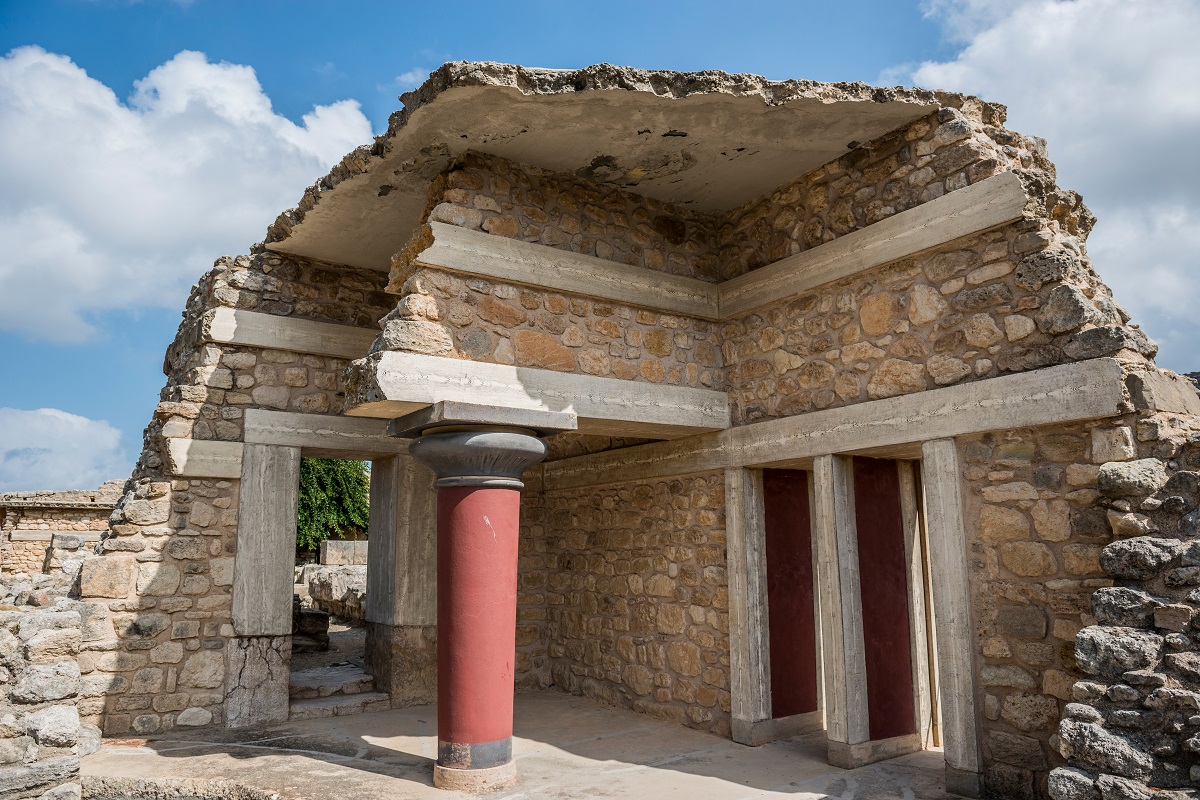
Palace of Knossos
The Minoan Palace of Knossos was the most important city on Crete before the Roman Era and the center of the first brilliant European civilization, the Minoan.
The palace of the city is the most visited archaeological site in Crete with more than 1.000.000 visitors per year. The palace is located just 5km south of Heraklion, on top of hill Kefala. It can be accessed via Knossos Avenue, which connects Heraklion with Skalani village. Apart from the palace itself, the area is full with several more archaeological finds, which makes sense considering that Knossos was a town with more than 100,000 people. The palace was the seat of the legendary King Minos and has been associated with famous Greek myths, like that of Daedalus and Icarus, the Labyrinth and the Minotaur. Minos was not a person, but a series of kings with the same name (as we say Pharaoh in Egypt). He was deified and he was thought to be the son of Europa and Zeus, as described in the story of the Rape of Europe. The palace of Minos was the heart of the city of Knossos, with constant presence in the historical events of Crete from the Neolithic era till the early Byzantine era. The first excavations at Knossos were made by the Cretan archaeologist Minos Kalokerinos in 1878, who found many old storage pots and other objects. However his work stopped shortly due to the Cretan – Turkish wars and was later continued by the Englishman Arthur Evans. The work of Evans started in 1900 and was completed in 1930, with the end of his restorations. Evans has received harsh criticism because of the large-scale restoration works in the palace using cement. However, one can discern that the perception of the palace today would not be so good, if all buildings were kept torn down, as found by Evans. The earliest traces of habitation date back to the Neolithic period (7th-4th millennium BC). Later, the place was inhabited till 1900BC when the old buildings were demolished to give room for building a bigger palace. The new palace occupied area of 22 acres and appears to have been destroyed by an earthquake in 1700BC. On the site of the old palace, the most magnificent Minoan palace ever was built. In 1600BC an earthquake caused severe damages, which were repaired very quickly with the addition of several new buildings. This specific palace version is the main palace we see today in the archaeological site of Knossos. In 1450BC the palace suffered a devastating damage caused either by an earthquake or a tsunami caused by the eruption of Santorini volcano. Later, when the Achaeans arrived in Crete (1350BC) the palace was flattened forever. However, the city of Knossos continued its history till the 500BC. Knossos remained the most powerful city on Crete for several centuries after the destruction of Minos Palace. It competed several other Cretan cities, like Gortys (the next capital of Crete during the Roman times) and Lyttos. In 221-219AD Knossos campaigned against Lyttos and flattened it, while its men were missing in another campaign. However, Gortys gradually increased its power and became the new capital of Crete. The coins of Knossos, which you can see in Heraklion Archaeological Museum, depict the Minotaur, the Labyrinth, ancient gods, etc. Symbol of Knossos was labrys (double ax), while the double bull horns were the symbols of Minoan religion.

